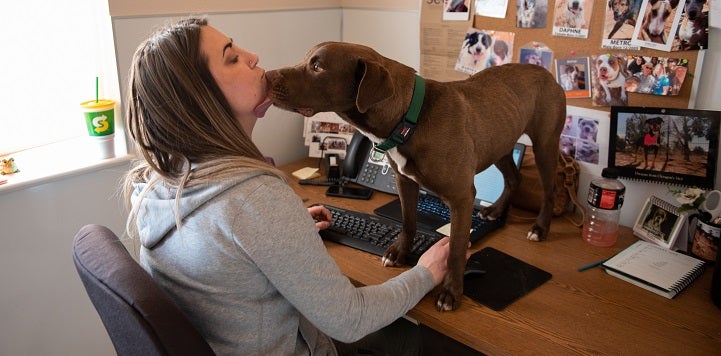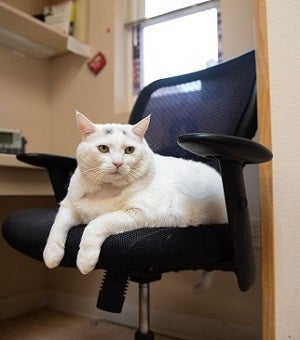
More tips on getting your shelter’s SOPs in shape
When Best Friends embed program staff Kristin Barney and Catherine Eldredge first arrived at Tulsa Animal Welfare (TAW), one of their early tasks was to review the organization’s standard operating procedures (SOPs). It’s safe to say that they weren’t excited about what they found. True to the observations made by senior director of lifesaving centers Sue Cosby in last week’s editorial, the SOPs that did exist were decades old and sat in a dusty pile at the back of a file cabinet.
Kristin and Catherine weren’t surprised to find outdated SOPs, however. There are many legitimate reasons why shelters don’t craft SOPs, most commonly because there doesn’t seem to be time available to prioritize writing them. Ultimately, though, the benefits of having SOPs are worth finding a few minutes a day to put them together.
“Working without SOPs gives me panic attacks,” says Tammy Jo Hallman, municipal and shelter support specialist who has 15 years’ experience in the field.
“How do you hold staff accountable without them? How do people know what to do? What do you expect from them and what should they expect from you? Even when management trains staff to do things a certain way, they need something in black and white to refer to in case staff persist in using different procedures.”
Sue shared some insights on SOPs last week, and we also spoke with staff out in the field providing consults with network partners to get their take on tackling the task of getting your SOPs in shape.
How to choose what’s most critical
 If you’re starting off with no SOPs – or have a pile of them that are no longer relevant – Sue’s advice to review the areas of greatest risk to your shelter first is solid. For example, a lack of proper handling SOPs could leave your staff open to injury – not to mention risk the lives of the animals in your care. Beyond immediate risks, Tammy Jo, Catherine and Kristin note that organizations also should ensure that any essential procedures changed due to the pandemic are clearly defined in print.
If you’re starting off with no SOPs – or have a pile of them that are no longer relevant – Sue’s advice to review the areas of greatest risk to your shelter first is solid. For example, a lack of proper handling SOPs could leave your staff open to injury – not to mention risk the lives of the animals in your care. Beyond immediate risks, Tammy Jo, Catherine and Kristin note that organizations also should ensure that any essential procedures changed due to the pandemic are clearly defined in print.
Take managed intake, for example. Ideally, it allows your organization to use resources in a way that offers the best possible outcome for every animal. Without context or an understanding of procedures to follow (not to mention an understanding of when it’s OK to deviate from those procedures), managed intake won’t function like it’s supposed to. It can even work against a shelter’s mandate to serve the public.
“We are the safety net for the community and that has to be a priority,” says Catherine, who is finishing up one year of serving as operations embed manager at TAW.
“While we can manage certain types of intakes, we must make sure we are helping those who really need help. We can’t ask people who find a stray dog to keep him until we can make an appointment if they can’t physically handle the dog, for instance.”
When Tammy Jo is doing a shelter assessment, she finds the top five to seven lifesaving opportunities for that organization.
 “Shelters should ask themselves where the biggest lifesaving gap is,” she says. “If animals are not getting a positive outcome because people are cleaning or medicating 90 different ways, concentrate on writing SOPs for those areas first. And of course, if anything inhumane is happening, that needs to be an immediate area of focus.”
“Shelters should ask themselves where the biggest lifesaving gap is,” she says. “If animals are not getting a positive outcome because people are cleaning or medicating 90 different ways, concentrate on writing SOPs for those areas first. And of course, if anything inhumane is happening, that needs to be an immediate area of focus.”
While deciding on what the most critical SOPs are varies by organization, euthanasia procedures are probably at the top of the list for most shelters.
“Shortly after Catherine and I arrived, TAW shifted to a case-management model for those decisions,” says Kristin, who also serves as the director of operations for the national shelter embed program. “That model ensured that every effort was being made to find positive outcomes, so there were a lot of details we had to spell out in a written SOP. And because some confusion persisted about who was involved in making those decisions, we revised the SOP a few times for clarity.”
How to avoid overcomplicating things
Sue hit the nail on the head when she said to keep things as short as possible. Fight the urge to write SOPs whose length rivals War and Peace. You don’t need to cover absolutely every possibility, or use specialized terminology when those documents are going to be used by staff in a variety of departments.
“The goal is efficiency and language can be a barrier to achieving that,” Tammy Jo says. “Likewise, if you get too far into the weeds, you’ll lose people on the basic premise.”
There are plenty of good SOP templates out there, too, says Catherine, who notes that she is “all about begging, borrowing and stealing.” For instance, the Shelter Animal Research website has a variety of links to templates and guides to writing SOPs. Some of the samples will be longer than you need, but they supply a good structure.
Additionally, a number of our playbooks have guidance on crafting SOPs; ASPCA pro has a manual on them; and members of National Animal Care & Control Association (NACA) can access resources on their site.
How to get staff buy-in
Since SOPs may cover new policies and procedures, or counter what staff have long assumed was the “right” way to do something, you may meet a less than enthusiastic reception. Tammy has certainly been met with a lot of crossed arms when introducing a new SOP.
“I frame it as a pilot or trial, then seek opinions two weeks to a month later,” she says. “Often the staff admits the rollout went a lot better than they expected. They’ll say things like, ‘The cats aren't trying to dart out of the kennels anymore because they're content due to the enrichment we’re providing.’”

New procedures can be a lot for staff to remember, so post visible reminders of the most used SOPs, like cleaning or handling protocols. (Make sure you laminate the printouts, so they stand up to wear and tear.) Consider visual as opposed to written representations of procedures. I once visited a shelter that posted photos of their staff wearing required personal protective equipment on the door of specific rooms (e.g., the ICU, the ringworm ward) so people could double-check that they were properly suited to enter.
How to remember the why
Finally, we recall one of most important points in Sue’s piece: what is your why? This not only refers to the reasons why a certain approach is best for the animals in your shelter, it also refers to why that approach is valuable for the organization.
“When I’ve consulted with shelters on creating SOPs, the initial barrier is often, ‘We don't have time,’ Tammy Jo says. “My answer is ‘You're losing time by having to explain this repeatedly, not to mention dealing with the repercussions that can come from somebody not following a certain vaccine protocol, for instance. I usually pay attention to when new ways of working have become second nature. Then I ask the staff if they’ve noticed how much time they’ve gained compared to the ways they used to approach their work. That helps solidify support.”
“Clear policies free up time and save money,” Kristin says. “The return on investment of having SOPs in place is significant.”
That’s particularly true in these times of chronic understaffing when shelters are struggling to get through daily operations.
“When you provide SOPs, your teams don't have to stop and think about how to do something, particularly when they’re covering multiple positions,” Tammy Jo says. “Getting from point A to point Z throughout the day is just easier with guidelines.”
Once your shelter can cruise through the day, you can turn your attention to reaching even greater goals.
“Having SOPs is a direct line to achieving higher save rates,” Tammy Jo says. “With daily operations under control, shelters can seriously consider how to add programs that will address their lifesaving gaps.”
And if that’s not reason enough to dust off your old SOPs, I don’t know what is.

Liz Finch
Senior Writer
Best Friends Network
If you enjoyed this program spotlight, you can find our complete catalog of spotlights here.